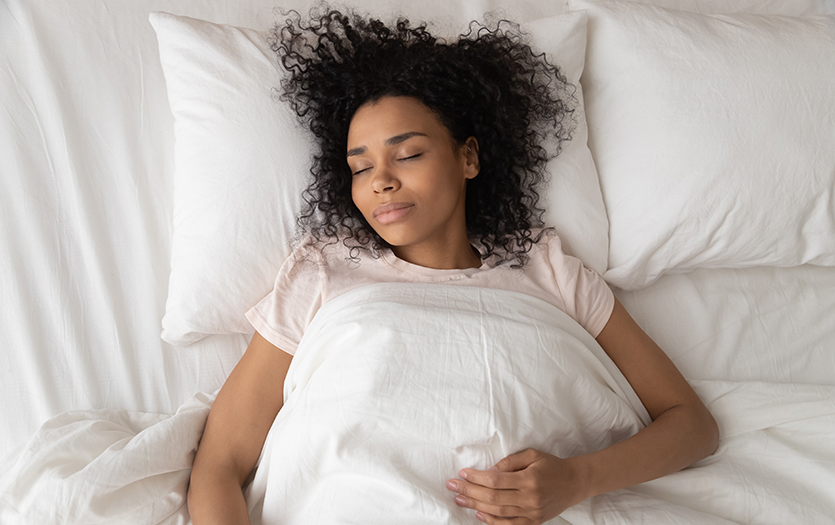
This post was written by Dr. Margaret Bronson, PT, DPT, supervisor, Parkview Therapy Services, Women’s/Pelvic Health and Oncology.
Getting a good night's sleep is essential for maintaining optimal health and well-being. While we often focus on factors such as mattress quality and room temperature, we tend to overlook the impact our sleeping positions have on our overall comfort and physical health. As experts in body mechanics and musculoskeletal health, physical therapists can provide valuable insights into the best sleeping positions that promote proper alignment, alleviate pain and enhance sleep quality. Let’s take a look at the merits and pitfalls of different sleeping positions.
Sleeping position: Back
Sleeping on your back is generally considered one of the best sleeping positions for optimal spinal alignment. By distributing your body weight evenly, this position helps maintain a neutral spine, reducing the risk of developing musculoskeletal imbalances or strains. It can be particularly beneficial for individuals with back pain or spinal conditions like herniated discs. Placing a pillow under your knees can further support the natural curvature of the spine and alleviate pressure on the lower back.
Sleeping position: Side
Side sleeping is another sleeping posture recommended by physical therapists. This position can help improve breathing and reduce the risk of snoring, making it ideal for individuals with sleep apnea or respiratory issues. To optimize spinal alignment, place a pillow between your knees to prevent your upper leg from pulling your spine out of alignment. Additionally, using a supportive pillow that keeps your head and neck in a neutral position can help prevent neck pain and stiffness.
Sleeping position: stomach
While stomach sleeping may be preferred by some, it’s generally not recommended due to its potential negative effects on the spine and neck. This position can strain the neck and lead to misalignment, contributing to discomfort and musculoskeletal issues over time. If stomach sleeping is unavoidable, using a thin pillow or no pillow at all can help minimize strain on the neck. However, it's advisable to transition to a back or side sleeping position to support better spinal alignment and reduce the risk of pain or discomfort.
Additional tips for a restful sleep
- Maintain a comfortable and supportive mattress and pillow that suit your individual needs.
- Avoid sleeping in awkward positions, such as with your arm under your head, as they can lead to nerve compression and discomfort.
- Stretch and practice relaxation techniques before bed to promote muscle relaxation and reduce tension.
- If you have chronic pain or specific health conditions, consult with a physical therapist or healthcare professional to determine the best sleeping position for your needs.
References
Bertolotti, G., Guzzo, G., & Pecoraro, F. (2017). Effects of Different Sleeping Postures on Back Pain. Muscles, Ligaments and Tendons Journal, 7(3), 520-524.
Chen, Y., Hsiao, P., Lee, Y., & Wang, Y. (2018). The Effects of Different Sleep Positions on Sleep Quality among Patients with Obstructive Sleep Apnea. Journal of Clinical Nursing, 27(9-10), e1999-e2006.



